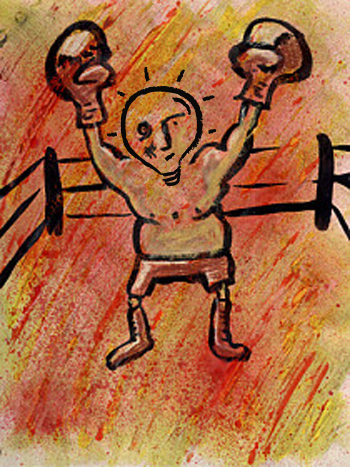Sure the social web is filled with rants and quacks, but I’ve also been thinking about how the science and technology of this channel lifts people up, and perhaps even makes us better in a deeper, spiritual way. Here are a couple of personal observations. I would love to hear what you think!
Spiritual touchpoints
I was feeling kind of bitchy this week and wrote a bitchy blog post to go right along with my mood. It was supposed to run today. Then I read Danny Brown’s post on leadership which reminded me that sometimes we need to think bigger about ourselves and the world. I decided the universe didn’t need another bitchy blog post and that I could do better. So I trashed it.
I experience these tiny tugs of hope, optimism and encouragement every day. Little social strings between me and others, pushing, pulling, inspiring me to do better, to think bigger about my social media community and the world. I am evolving in positive ways because of it.
Have you surrounded yourself with these spiritual touchpoints too?
The communion of community
Recently a woman in my city lost her 18-year-old son in a tragic and violent drug-related death. Her pain was exacerbated by questions about how police handled the case, which played out in a public forum.
I really don’t know this woman, but I have children too and the agony that came out on her blog posts touched me and probably thousands of others like me. We were a community of strangers united in grief. We connected through Twitter, through comments, through prayer for her family.
I’ve seen this same kind of communion of strangers after the Haiti earthquake and the Nashville flood. People used technology for a higher purpose, to commune with the needy, displaced and heart-broken. This gives me so much hope.
Igniting Passion
I’ve just read the “Brains on Fire” book (recommended – no affiliation other than profound admiration!). The agency by the same name preaches that the social web is an opportunity to create not just “conversation,” but movements. Watch this short video they created for Love 146. I dare you not be outraged, shocked and moved.
Love 146 works toward the abolition of child sex trafficking and exploitation. Brains on Fire created a movement by igniting passion through stories, images, even music and art. This is work that is measurably changing the lives of forgotten children. This is the social web — and the human spirit — at its best.
Love one another
There are people I have met on the social web who love and care about me.
That is probably the sappiest thing I have ever written but it is undeniable and true so why not say it? The Internet now allows you to find your folks wherever they may be, to establish your personal movement.
Does this sound weird to you? I think it can happen for anybody if you give it a chance. The social web is spreading love from country to country and server to server, to laptops, smart phones, iPads and people. It’s amazing to think about.
More love in more places around the world has gotta be a good thing, right?
A global heartbeat
I am in daily contact with people who inspire me from Sweden, Malaysia, Jordan, France, Australia, Russia and many other nations. Perhaps you are too.
Pause for a moment and realize that you and I are experiencing a milestone in human history. A profound and spiritual milestone, I think. For the first time we have access to free, real-time, global communications. The ability to make these connections were not available to us just a few years ago.
And this is just the beginning. Sure, Facebook is the home to Farmville and about every other inane concept known to man. But don’t dwell there. This platform alone is providing an opportunity to unite hundreds of millions of people. Hundreds … of millions … of people. Doesn’t that take your breath away?
Twitter enabled a revolutionary movement in Iran. It failed … this time. The power of technology to connect, nurture, and teach will eventually out-run the technology that is trying to control and contain it. We WILL be connected and then there will be one global heartbeat pulsing through the social web.
Look through the silliness, cut through the drivel, ignore the hate. There is a core light of hope streaming above it all with the potential to unite us, heal us, and inspire us no matter who or where we are.
Mark Schaefer
Mark is Executive Director of Schaefer Marketing Solutions and CMO of Freesource Inc. You can find him on Twitter at @markwschaefer and on his blog {grow} at www.businessesGROW.com
 We’re a little too focused on collecting humans like marbles.
We’re a little too focused on collecting humans like marbles. Put random folks in at the top and loyal customers come out at the bottom…
Put random folks in at the top and loyal customers come out at the bottom… The purpose of this post isn’t to argue the merits of inbound marketing with creative content. I believe that any B2B marketing professional still debating against that is probably not open to the points I want to make.
The purpose of this post isn’t to argue the merits of inbound marketing with creative content. I believe that any B2B marketing professional still debating against that is probably not open to the points I want to make.
